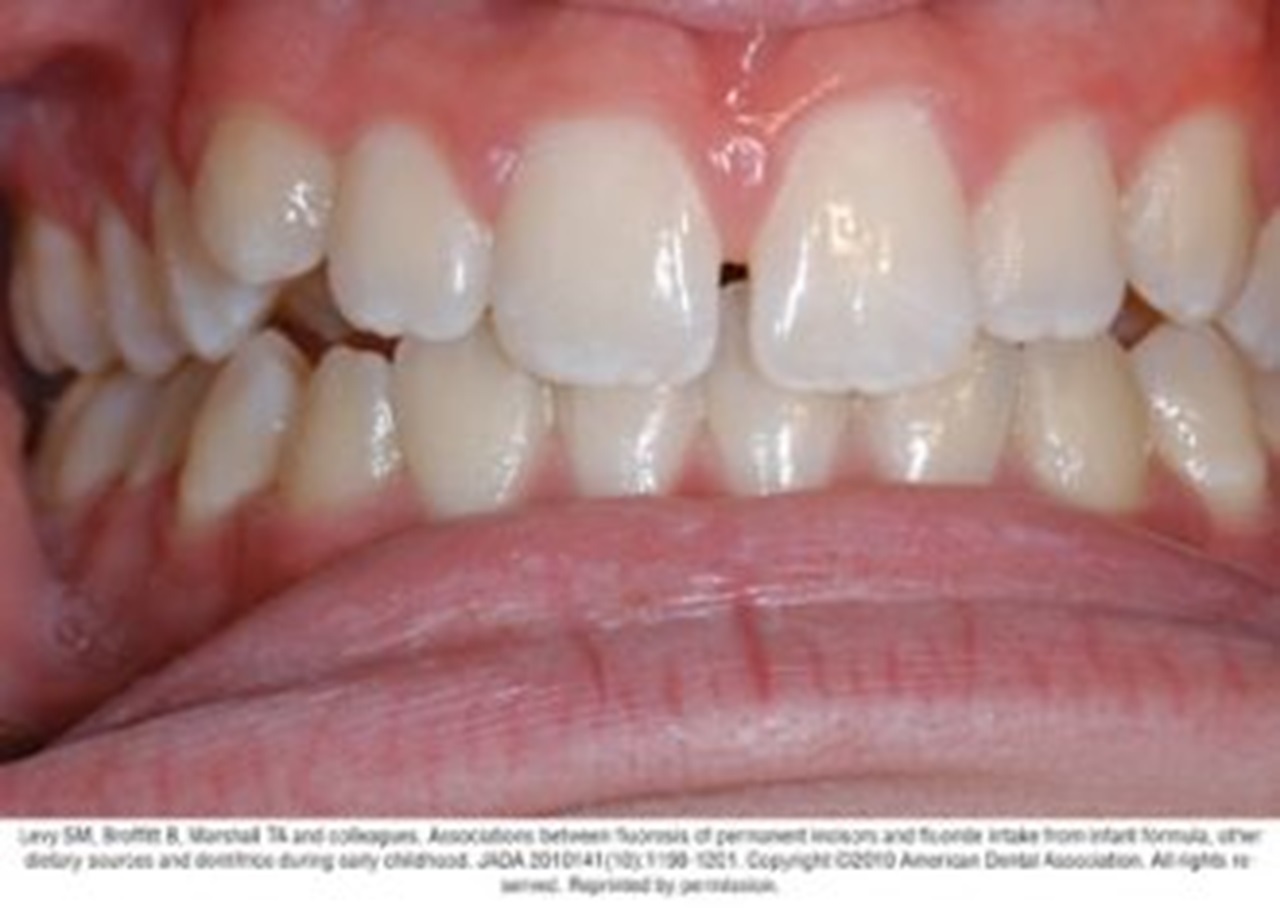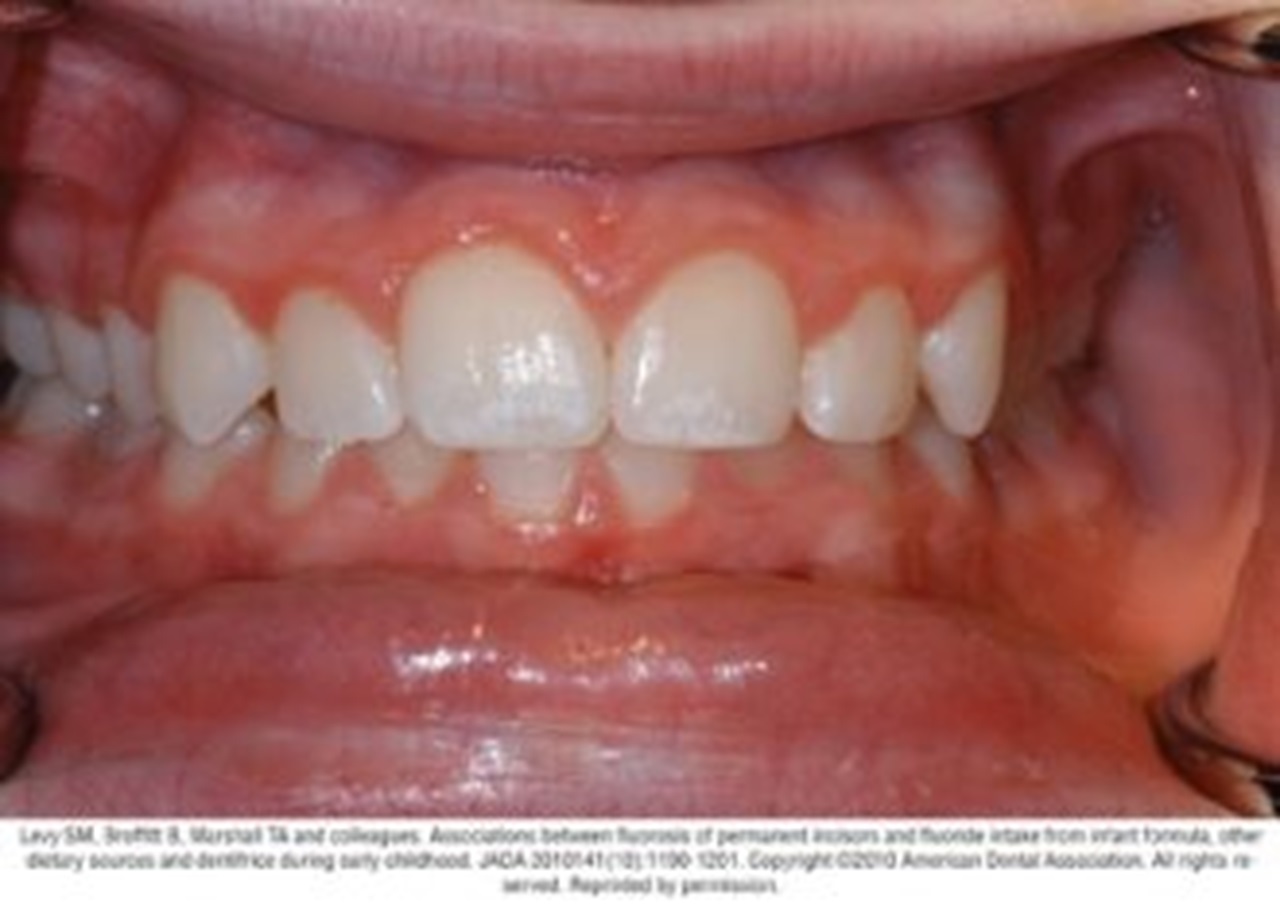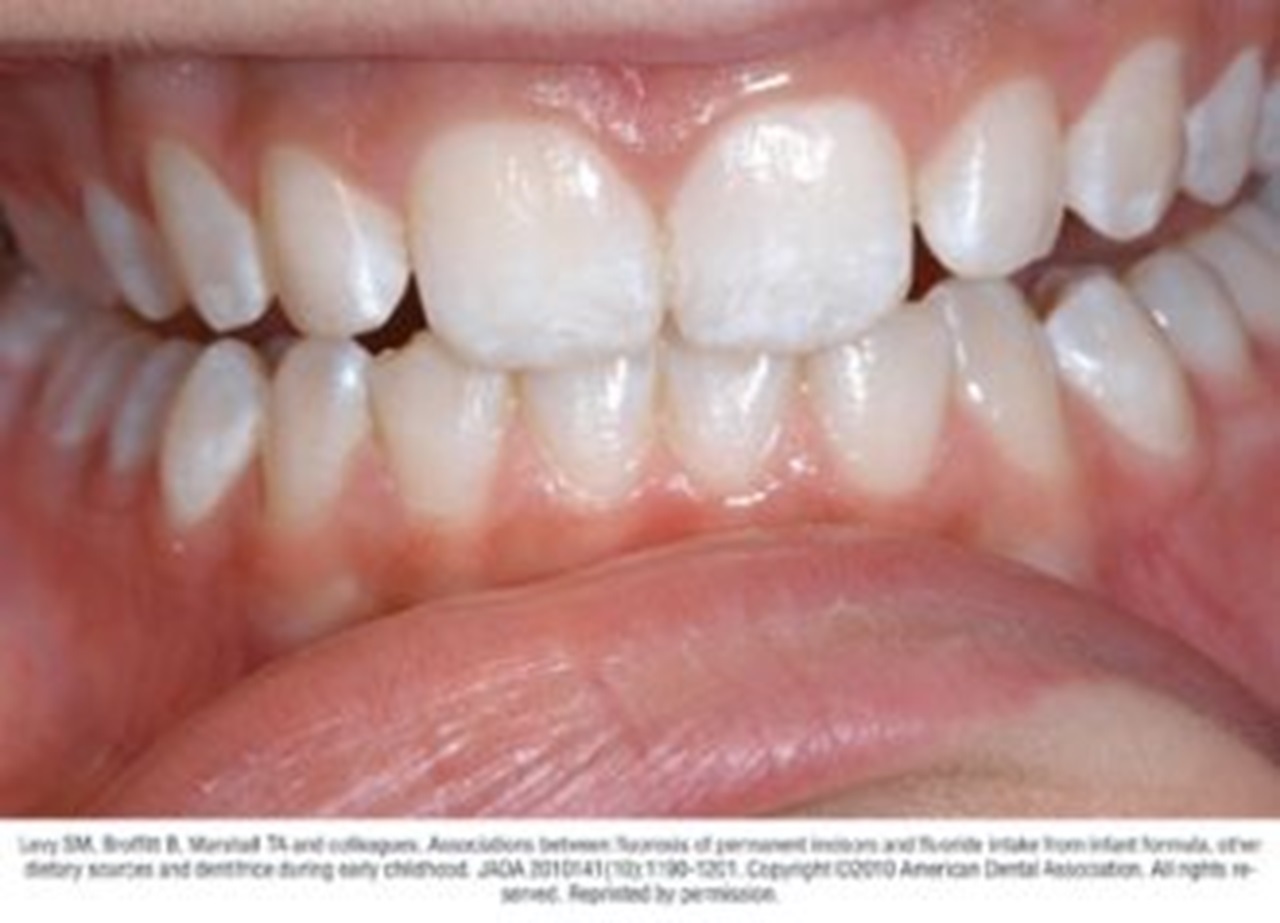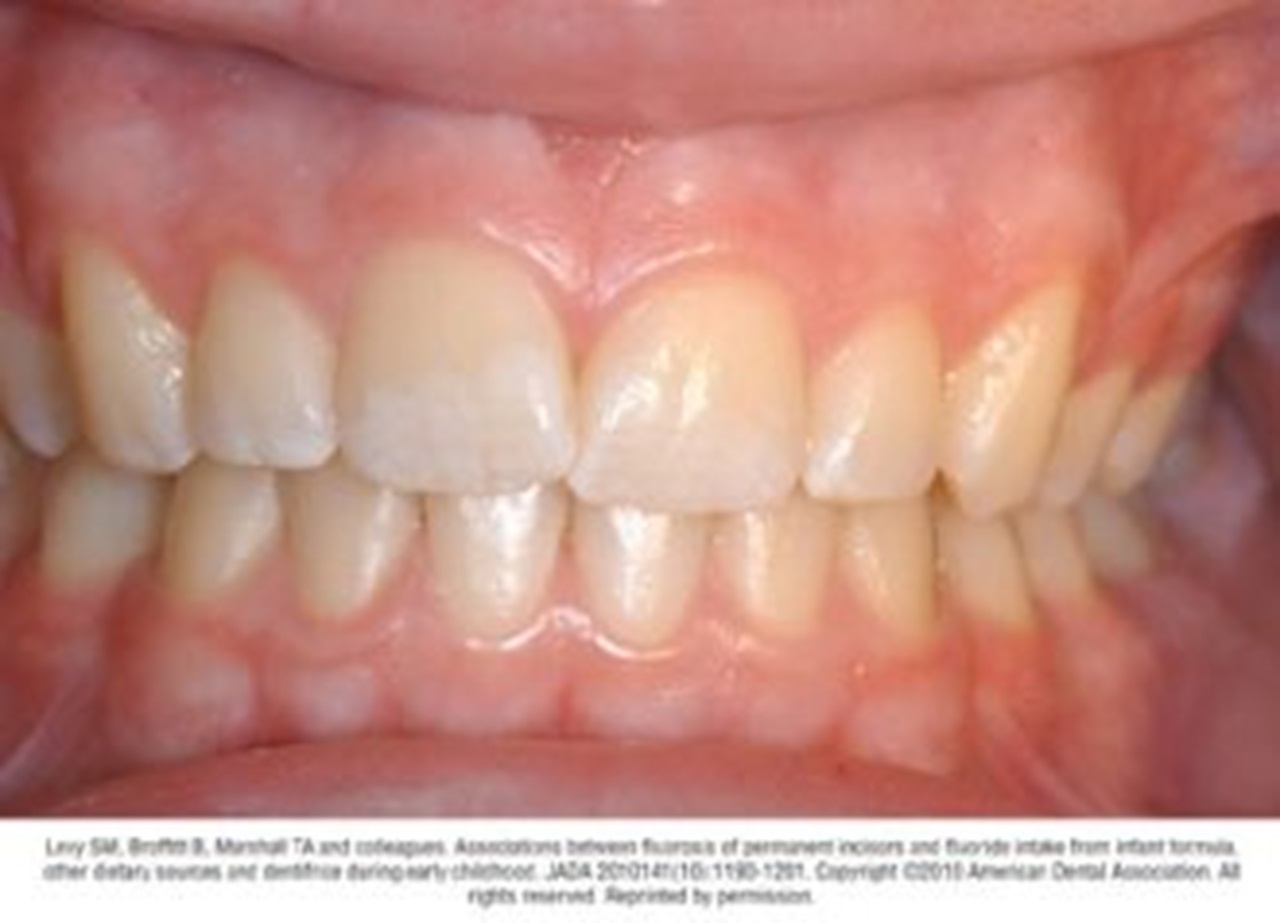Dental fluorosis is the appearance of faint white lines or streaks on the teeth that only occurs when younger children consume too much fluoride, from any source, over long periods when teeth are developing under the gums. Once teeth break through the gums, you cannot develop fluorosis.
Fluorosis isn’t a disease and doesn’t affect the health of your teeth. In most cases, the effect is so subtle that only a dentist would notice it during an examination. The type of fluorosis found in the United States has no effect on tooth function and may make the teeth more resistant to decay.
Below are four typical cases of mild fluorosis, seen in children participating in the Iowa Fluoride Study.



